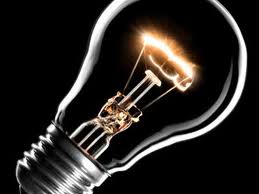 If your family is home for the holidays, chances are the lights will end up staying on a little longer than usual. Those late night discussions and friendly family board games often require extra light to keep the action going. The good news is—even with that extra light—your energy bill can still be reasonable, thanks to efficiency standards the Energy Department has implemented for light bulbs.
If your family is home for the holidays, chances are the lights will end up staying on a little longer than usual. Those late night discussions and friendly family board games often require extra light to keep the action going. The good news is—even with that extra light—your energy bill can still be reasonable, thanks to efficiency standards the Energy Department has implemented for light bulbs.
Common light bulbs now sold in the United States typically use about 25%-80% less energy than traditional incandescents. Many bulbs meet these new standards, including halogen incandescents, compact fluorescents (CFLs), and light emitting diodes (LEDs). These new, energy-saving light bulbs could save you about $50 per year when you replace 15 traditional incandescent bulbs in your home. The new bulbs also provide a wide range of choices in color and brightness, and many of them last much longer than traditional light bulbs.
The lighting standards, which phased in from 2012-2014 and were established by the bipartisan Energy Independence and Security Act of 2007 (EISA 2007), don’t ban incandescent or any specific bulb type; instead, they state that bulbs need to use about 25% less energy. Lighting standards in place today are projected to save U.S. households almost $7 billion in 2015 alone.
Consumers who switch to the energy-saving bulbs will immediately spend less money on their monthly energy bills for the same amount of light. While the initial price of the newer light bulbs could be higher than the inefficient incandescent bulbs you might be replacing, you’ll spend less each year to operate them. Most CFLs pay for themselves with the energy they save in less than 9 months. And if you’re looking for the most efficient option on the market, check out LEDs, which are rapidly falling in price (from $40 in 2011 to as little as $3 in 2015), and use at least 75% less energy and last 25 times longer than incandescent lighting.
When looking to lower your energy bills, replacing the old light bulbs in your house can be one of the best and easiest places to start.
Source: www.energy.gov
